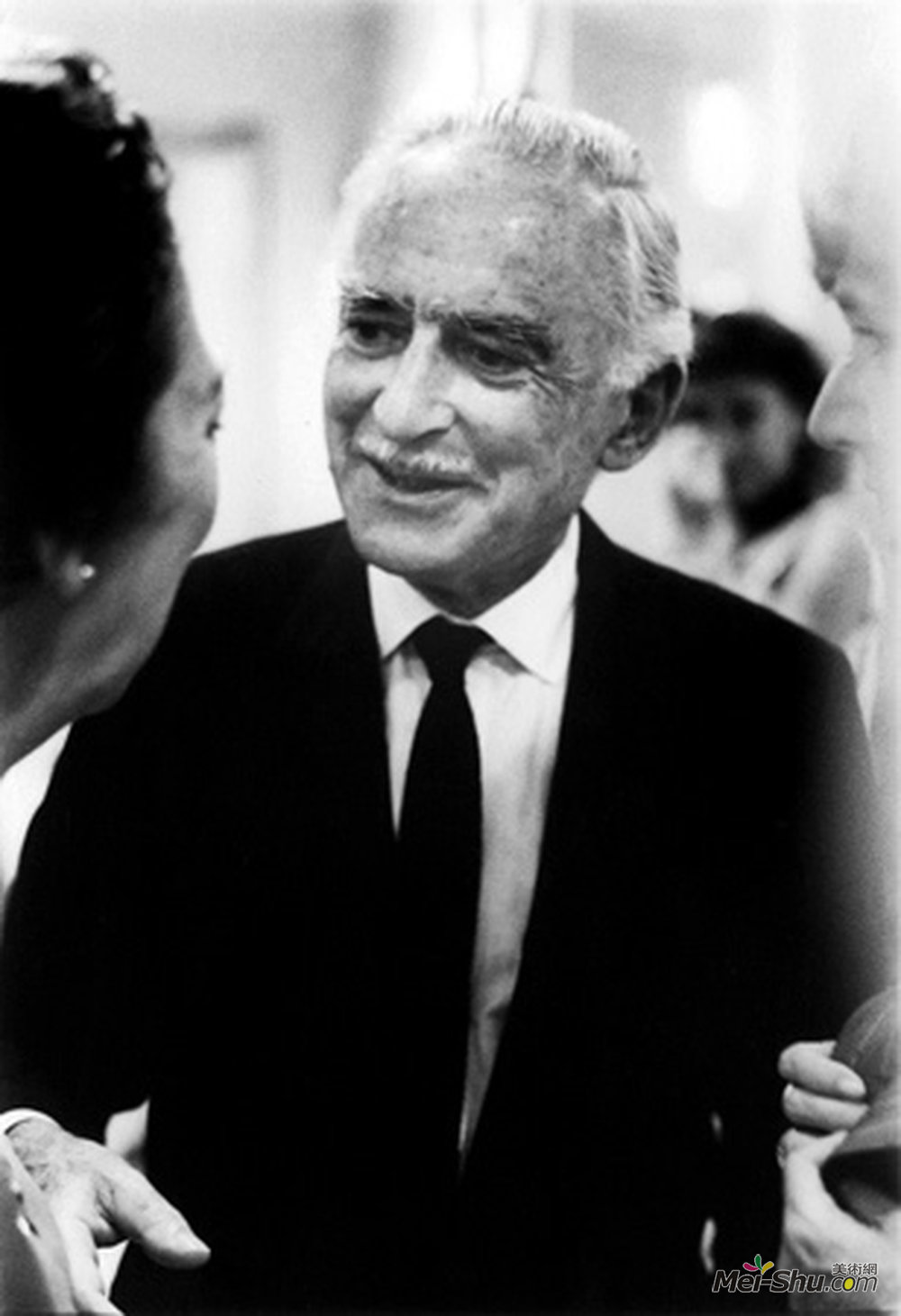
亚力山大·利伯曼(Alexander Liberman)
艺术家: 亚力山大·利伯曼
生于: 1912年9月04日;乌克兰基辅
卒于: 1999年11月19日;迈阿密,佛罗里达州,美国
国籍: 美国,俄罗斯联邦
流派: 画后抽象
领域: 绘画,雕塑,摄影
Alexander Semeonovitch Liberman是俄罗斯裔美国杂志编辑、出版商、画家、摄影师和雕塑家。他在Cond& Nast出版公司的32年间担任高级艺术职务。
当他父亲担任苏联政府的顾问时,全家搬到了莫斯科。在那里生活变得艰难,1921年,他的父亲获得列宁和政治局的许可,带着这个男孩去伦敦。
年轻的自由人曾在俄罗斯、英国和法国接受教育,在巴黎过着白人的生活。他在巴黎的出版生涯始于早期的图画杂志《Vu》,他在那里与Lucien Vogel合作,并与摄影师如Brassa&239;Andr&233;Kert&sz和Robert Capa合作。1941年移居纽约后,他开始为Cond&Nast出版公司工作,升任编辑总监,1962-1994年担任编辑总监。他的雕塑作品由工业物体(钢工字梁、管子、鼓等部分)组装而成,通常涂上均匀明亮的颜色。利伯曼在1986年接受采访时谈到了他作为雕塑家的成长历程和美学,他说:“我认为许多艺术作品都是尖叫,我认同尖叫。&希什霍恩博物馆和雕塑园、金字塔山雕塑公园、泰特美术馆和古根海姆博物馆。他的巨作《路》由18个打捞的钢制油罐制成,长65英尺(20米)x 102英尺(31米)x 100英尺(30米)的结构,成为劳梅尔雕塑公园的标志性作品,也是密苏里州圣路易斯的主要标志。degarde Sturm,一个模特和有竞争力的滑雪者。他的第二任妻子(1942岁),塔蒂亚娜YaVofff杜普莱斯六世(1906 - 1991),曾是一个儿时的玩伴和保姆。1941,他们从占领的法国、Lisbon、纽约逃到了一起。她在巴黎经营了一个帽子沙龙,然后为纽约的Henri Bendel设计帽子。她继续在萨克斯第五大道做女帽,直到20世纪50年代中期,在那里她被宣传为“Tatania du Plessix&或”Tatania of Saks"1992,他嫁给了Melinda Pechangco,一位在早期疾病中照顾过塔蒂亚娜的护士。他的继女,弗朗辛杜普雷斯格雷,是一个著名的作者。
Artist :Alexander Liberman
Additional Name :Alexander Liberman
Born : Kiev, Ukraine
Died : Miami, Florida, United States
Nationality :American,Russian
Art Movement :Post-Painterly Abstraction
Field :painting,sculpture,photography
Alexander Semeonovitch Liberman was a Russian-American magazine editor, publisher, painter, photographer, and sculptor. He held senior artistic positions during his 32 years at Condé Nast Publications.
When his father took a post advising the Soviet government, the family moved to Moscow. Life there became difficult, and his father secured permission from Lenin and the Politburo to take the boy to London in 1921.
Young Liberman was educated in Russia, England and France, and took up life as a white émigré in Paris. He began his publishing career in Paris with the early pictorial magazine Vu, where he worked under Lucien Vogel and with photographers such as Brassaï, André Kertész, and Robert Capa. After emigrating to New York in 1941, he began working for Condé Nast Publications, rising to the position of Editorial Director, which he held from 1962-1994.
Only in the 1950s did Liberman take up painting and, later, metal sculpture. His highly recognizable sculptures are assembled from industrial objects (segments of steel I-beams, pipes, drums, etc.,) often painted in uniform bright colors. In a 1986 interview concerning his formative years as a sculptor and his aesthetic, Liberman said, "I think many works of art are screams, and I identify with screams." Prominent examples of his work are in the collections of the Metropolitan Museum of Art, Storm King Art Center, Hirshhorn Museum and Sculpture Garden, Pyramid Hill Sculpture Park, Tate Gallery, and the Guggenheim Museum. His massive work "The Way", a 65 feet (20 m) x 102 feet (31 m) x 100 feet (30 m) structure made of eighteen salvaged steel oil tanks, became a signature piece of Laumeier Sculpture Park and a major landmark of St. Louis, Missouri.
He was briefly married (August 25, 1936) Hildegarde Sturm, a model and competitive skier. His second wife (since 1942), Tatiana Yacovleff du Plessix Liberman (1906–1991), had been a childhood playmate and baby sitter. In 1941, they escaped together from occupied France, via Lisbon, to New York. She had operated a hat salon in Paris, then designed hats for Henri Bendel in New York. She continued in millinery at Saks Fifth Avenue until the mid-1950s, where she was billed as "Tatania du Plessix" or "Tatania of Saks". In 1992 he married Melinda Pechangco, a nurse who had cared for Tatiana during an earlier illness. His stepdaughter, Francine du Plessix Gray, is a noted author.